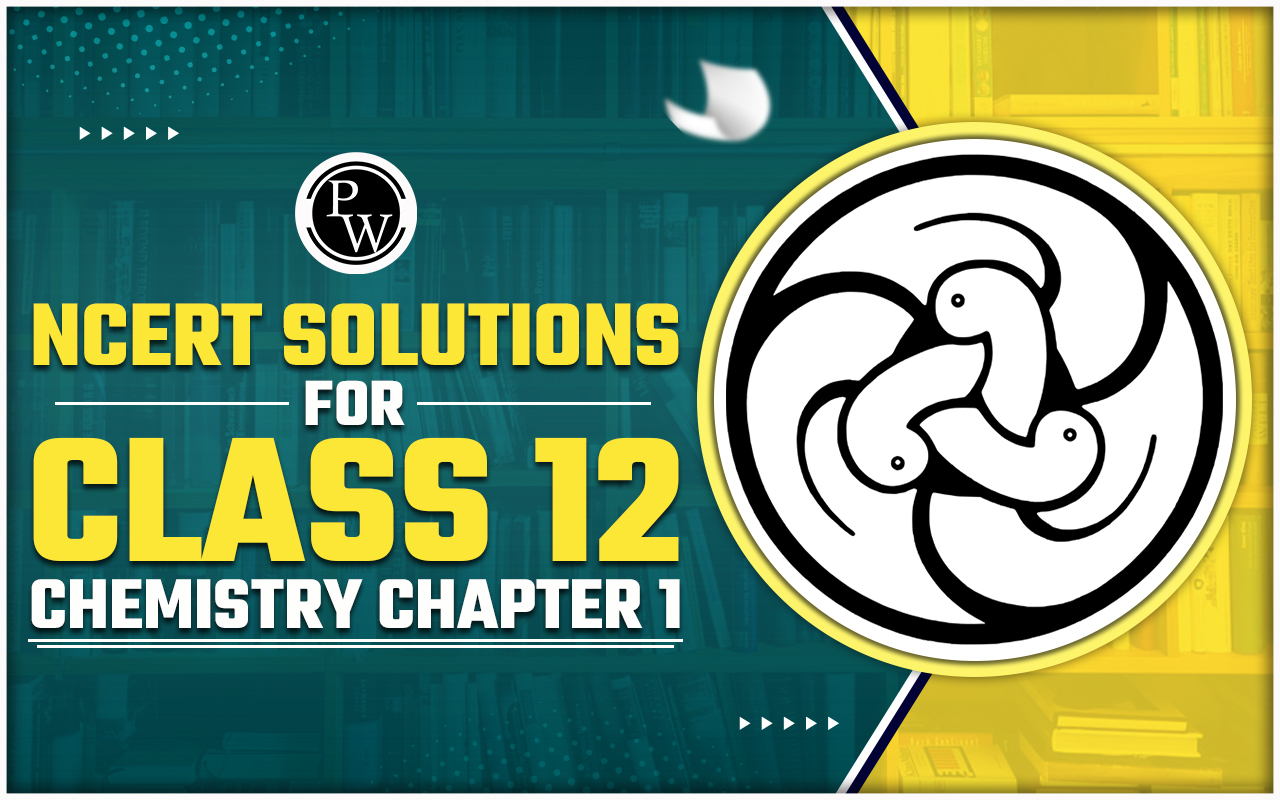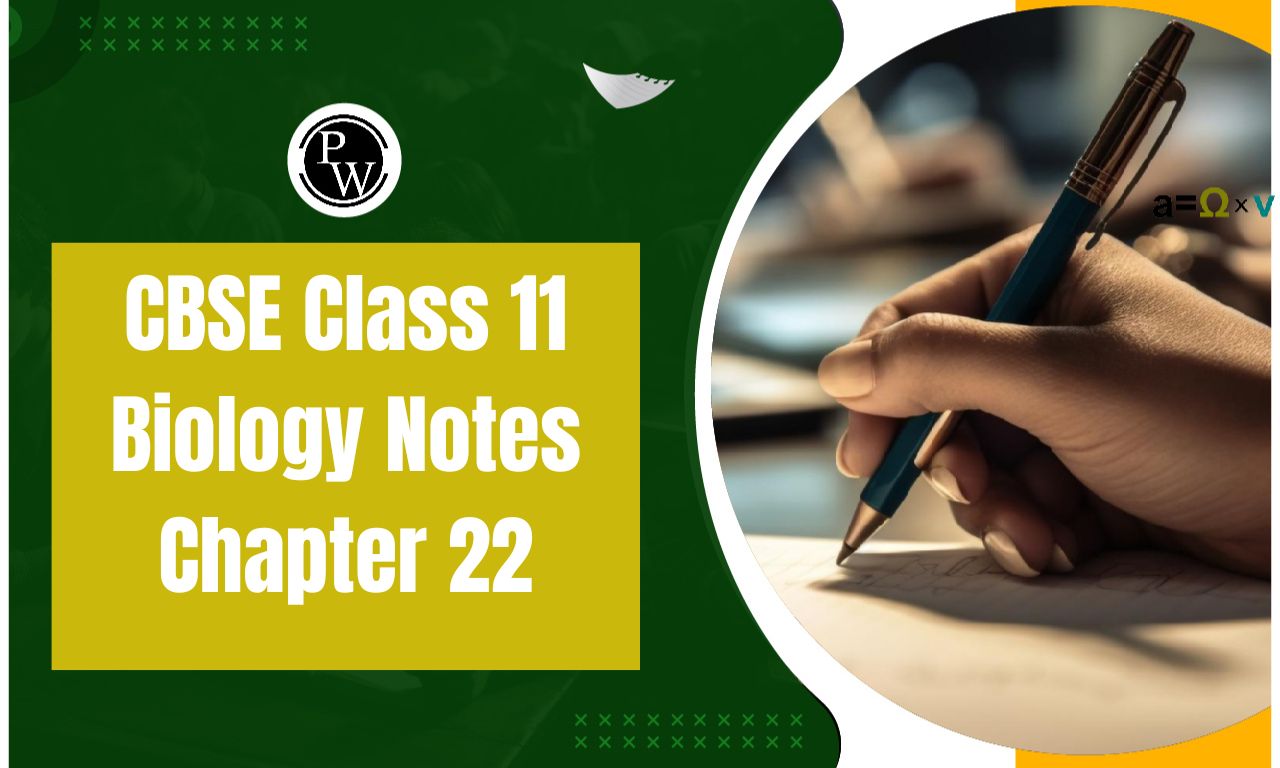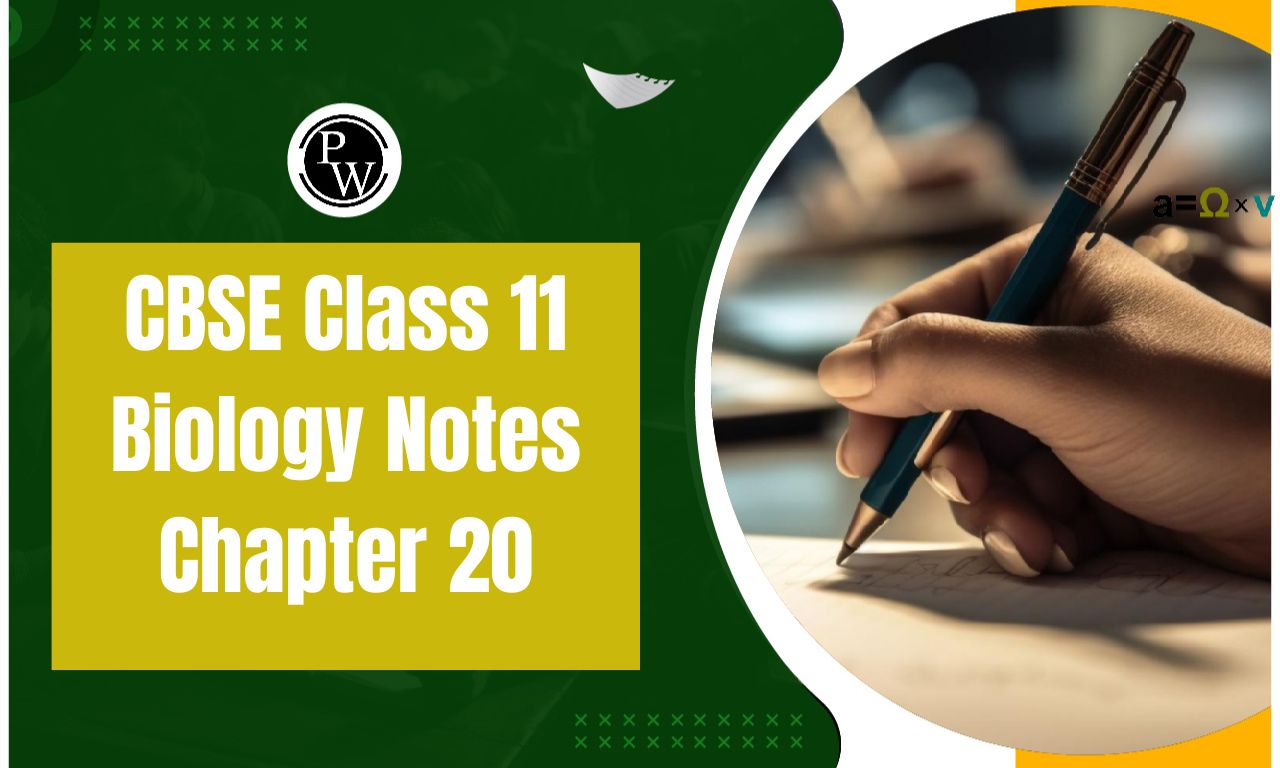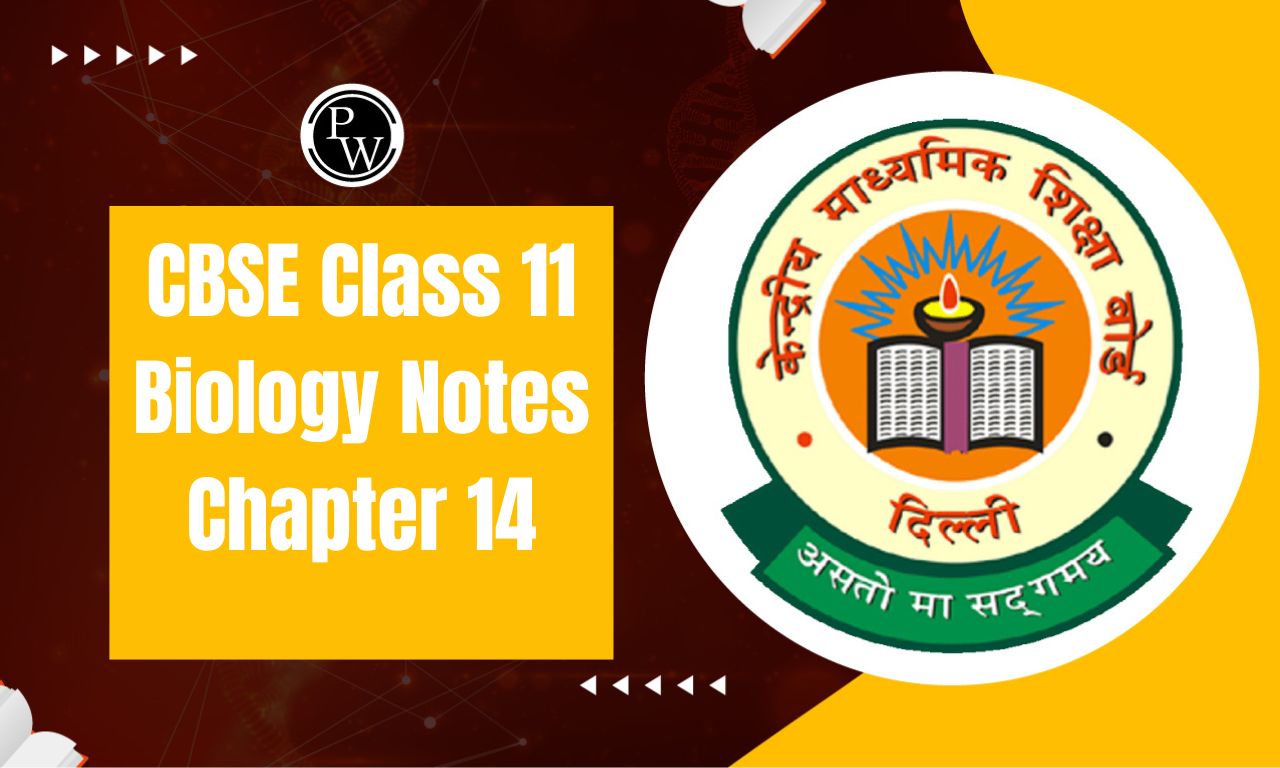
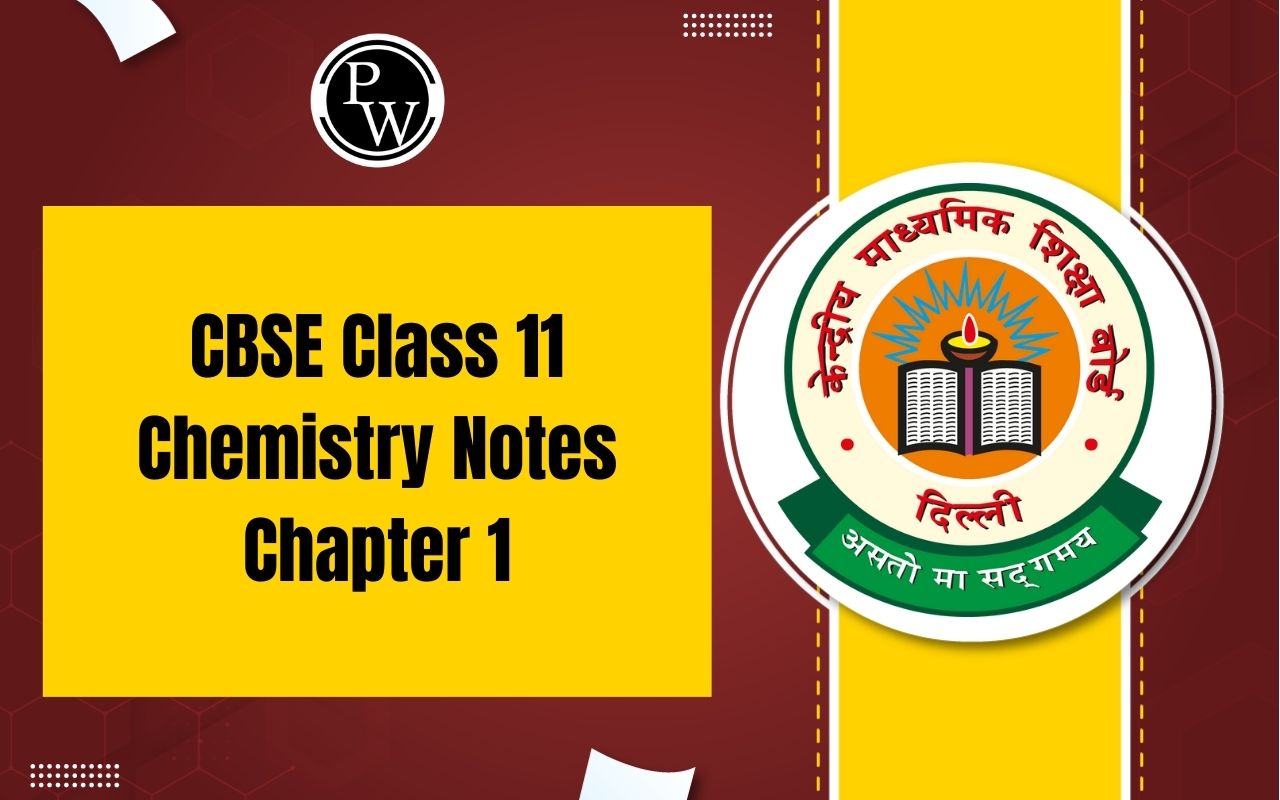
CBSE Class 11 Chemistry Notes Chapter 1: CBSE Class 11 Chemistry Notes Chapter 1 talks about the basic ideas of chemistry. It explains what chemistry is and what it studies. Chemistry is all about studying different kinds of substances and how they change. The chapter begins by talking about matter, which is anything that takes up space and has weight.
It then explains the different types of matter like elements, compounds, and mixtures. It also covers important concepts like the law of conservation of mass, which says that mass cannot be created or destroyed in a chemical reaction.Another important idea introduced is the mole, which helps us measure the amount of substance in a chemical reaction. Overall, this chapter gives a simple introduction to the world of chemistry and its fundamental principles.
Note: PWNSAT by PhysicsWallah is a national test for Classes 5–12, offering up to 100% scholarships, cash prizes, AIR ranks, and goodies. It assesses JEE, NEET, and school-level concepts. Enroll Now.
Some Basic Concepts of Chemistry Class 11 Notes
Laws of Chemical Combination
The Laws of Chemical Combination are fundamental principles that govern the behavior of substances during chemical reactions. These laws provide insights into the quantitative relationships between reactants and products in chemical reactions. Here are the key laws of chemical combination:Law of Conservation of Mass: This law, proposed by Antoine Lavoisier, states that the total mass of substances involved in a chemical reaction remains constant. In other words, mass is neither created nor destroyed during a chemical reaction; it is merely rearranged from reactants to products.
Law of Definite Proportions: Also known as the Law of Constant Composition, this law was formulated by Joseph Proust. It states that a given chemical compound always contains its constituent elements in fixed proportions by mass. Regardless of the source or method of preparation, the ratio of elements in a compound is constant.
Law of Multiple Proportions: This law, proposed by John Dalton, states that when two elements form more than one compound, the masses of one element that combine with a fixed mass of the other element are in ratios of small whole numbers. This law illustrates the concept of combining ratios between elements in different compounds.
Gay-Lussac's Law of Combining Volumes: Formulated by Joseph Louis Gay-Lussac, this law states that when gases react, they do so in volumes that bear simple whole-number ratios to one another and to the volumes of the gaseous products, provided all volumes are measured under the same conditions of temperature and pressure.
Avogadro's Law: This law, proposed by Amedeo Avogadro, states that equal volumes of gases, at the same temperature and pressure, contain the same number of molecules. This law is essential for understanding the concept of the mole and the relationship between volume and amount of gas.
Classification of Matter at Macroscopic Level
At the macroscopic level, matter is classified into three main categories based on its physical state and properties: solids, liquids, and gases.Solids: Solids have a definite shape and volume. The particles in solids are closely packed together and have strong intermolecular forces that hold them in a fixed position. This arrangement gives solids their rigidity and resistance to compression. Examples of solids include metals, wood, glass, and rocks.
Liquids: Liquids have a definite volume but take the shape of their container. The particles in liquids are less closely packed compared to solids, allowing them to move past one another. Liquids flow and can be poured, but they do not expand to fill the entire volume of the container. Examples of liquids include water, milk, oil, and gasoline.
Gases: Gases have neither a definite shape nor volume. The particles in gases are spaced far apart and move freely in all directions. Gases completely fill the container they occupy and expand to fill any available space. They are highly compressible and exert pressure on the walls of the container. Examples of gases include oxygen, nitrogen, carbon dioxide, and hydrogen.
Properties of Matter
Properties of matter are characteristics or attributes that describe its behavior, composition, and interactions with other substances. These properties can be classified into two main categories: physical properties and chemical properties.Physical Properties:
- Color: The visual appearance of a substance.
- Odor: The characteristic smell of a substance.
- Density: The mass per unit volume of a substance.
- Melting Point: The temperature at which a solid changes into a liquid.
- Boiling Point: The temperature at which a liquid changes into a gas.
- Solubility: The ability of a substance to dissolve in a solvent.
- Conductivity: The ability of a substance to conduct heat or electricity.
- Malleability: The ability of a substance to be hammered into thin sheets.
- Ductility: The ability of a substance to be drawn into wires.
Chemical Properties:
- Flammability: The ability of a substance to burn or ignite.
- Reactivity: The tendency of a substance to undergo chemical reactions with other substances.
- Corrosiveness: The ability of a substance to cause deterioration or damage to other materials.
- Toxicity: The degree to which a substance can harm living organisms.
- Oxidation State: The number of electrons gained, lost, or shared by an atom in a compound.
Measurement
Measurement is the process of quantifying and assigning a numerical value to a particular attribute or characteristic of an object or phenomenon. It plays a crucial role in various fields such as science, engineering, economics, and everyday life. Measurements provide a standardized way to communicate information about quantities, enabling comparison, analysis, and prediction.Physical Quantities
Physical quantities are aspects of the physical world that we measure, like length, time, mass, etc. These quantities are measured using two components: a number and a unit, which is the reference standard for measurement.S.I. Units
The SI system, established by the General Conference on Weights and Measures, provides a standardized framework for measuring physical quantities. It includes seven base units for fundamental scientific quantities, from which other units like speed, volume, and density can be derived.Here are the seven base SI units:
- Meter (m) - for length
- Kilogram (kg) - for mass
- Second (s) - for time
- Ampere (A) - for electric current
- Kelvin (K) - for temperature
- Mole (mol) - for amount of substance
- Candela (cd) - for luminous intensity
Some Important Definition
Mass and Weight:
- Mass refers to the amount of substance present in an object. It remains constant regardless of the location.
- Weight, on the other hand, is the force exerted by gravity on an object. It can vary based on the gravitational field strength.
- The SI unit for mass is the kilogram (kg), while the SI derived unit for weight is the Newton (N).
Volume:
- Volume is the measure of the three-dimensional space occupied by an object or substance.
- It's commonly quantified using SI derived units, typically cubic meters (m^3).
Density:
- Density represents the mass of a substance per unit volume.
- It's denoted by the symbol ρ (rho), and its SI unit is kilograms per cubic meter (kg/m^3).
Temperature:
- Temperature quantifies the degree of hotness or coldness of a substance.
- There are three common temperature scales: Celsius (°C), Fahrenheit (°F), and Kelvin (K).
- Celsius and Fahrenheit are related by the formula °F = (9/5) * °C + 32, while Kelvin is related to Celsius by K = °C + 273.15.
Law of Chemical Combination
These laws describe fundamental principles governing chemical combinations:Law of Conservation of Mass:
- In a chemical reaction, the total mass of the reactants is equal to the total mass of the products.
- Antoine Lavoisier proposed this law in 1789.
Law of Constant / Definite Proportions:
- The proportions of elements in a compound are fixed and constant.
- Joseph Proust formulated this law.
Law of Multiple Proportions:
- When elements combine to form compounds, their masses combine in simple whole-number ratios.
- This principle was introduced by Dalton in 1803.
Law of Reciprocal Proportions:
- When two elements combine with a third element, their mass ratios are either the same or simple multiples of each other.
- Richter proposed this law in 1792.
Gay Lussac’s Law of Gaseous Volumes:
- The volumes of gaseous reactants and products in a chemical reaction can be expressed as simple whole-number ratios.
- Gay-Lussac formulated this law in 1808.
Avogadro Law:
- Equal volumes of gases at the same temperature and pressure contain the same number of molecules.
- Proposed by Avogadro in 1811.
Dalton’s Atomic Theory
Indeed, in 1808, John Dalton published "A New System of Chemical Philosophy," which outlined his atomic theory. Here is the key points Dalton proposed:Indivisible Atoms: Matter is composed of indivisible particles called atoms. These atoms are the smallest units of matter and cannot be divided further by chemical means.
Identical Properties of Atoms: All atoms of a given element are identical in their properties, including mass. Atoms of different elements have different properties and differ in mass.
Fixed Ratios in Compounds: Compounds are formed when atoms of different elements combine in fixed, whole-number ratios. These ratios are characteristic of each compound and remain constant regardless of the source or method of preparation.
Conservation of Atoms: Chemical reactions involve the reorganization of atoms. Atoms are neither created nor destroyed during a chemical reaction; they simply rearrange to form new substances.
Atom
An atom is the smallest unit that retains the properties of an element and participates in chemical reactions (in non-radioactive reactions). Method 1: Atomic Mass in Atomic Mass Units (amu or u):- Atomic mass is the mass of a single atom of an element, measured in atomic mass units (amu) or unified mass (u).
- 1 amu or u is defined as 1/12th of the mass of one atom of carbon-12 (C12).
Method 2: Molar Atomic Mass:
- The mass of 6.022 × 10^23 atoms of an element measured in grams is known as the molar atomic mass.
- This quantity is numerically equal to the atomic mass measured in amu.
- When atomic mass is expressed in grams, it's referred to as the molar atomic mass.
- 6.022 × 10^23 is known as Avogadro's number.
- This number of atoms (6.022 × 10^23) is also called 1 mole of atoms.
- A mole is a unit of measurement representing a specific number, just like a dozen represents 12 items and a million represents 10^6 items.
CBSE Class 11 Chemistry Notes Chapter 1 PDF
You can access the PDF for CBSE Class 11 Chemistry Notes Chapter 1 "Some Basic Concepts of Chemistry" from the link provided below. This PDF covers all the important topics discussed in the chapter, including matter, types of matter, laws of chemical combination, and the concept of the mole.
CBSE Class 11 Chemistry Notes Chapter 1 PDF
Study without using the internet
Benefits of Using CBSE Class 11 Notes Chemistry Chapter 1
Conceptual Clarity: The notes provide a clear explanation of fundamental concepts like matter, its classification, and properties, enhancing conceptual understanding.
Comprehensive Coverage: All essential chapters of the cbse class 11 chemistry syllabus are covered, ensuring that students have access to all the necessary information for exam preparation.
Easy Revision: The notes are concise and well-organized, making them ideal for quick revision before exams or tests.
Practice Questions: They may include practice questions and problems to help students assess their understanding and reinforce their learning.
Visual Aids: Some notes may include diagrams, charts, and illustrations to aid visual learners in understanding complex concepts more easily.
Accessible Anywhere: They can be accessed digitally, allowing students to study anytime and anywhere, making learning more flexible and convenient.
CBSE Class 11 Chemistry Notes Chapter 1 FAQs
How can I use these notes effectively for exam preparation?
Are these notes suitable for competitive exam preparation?
Can I rely solely on these notes for exam preparation?


